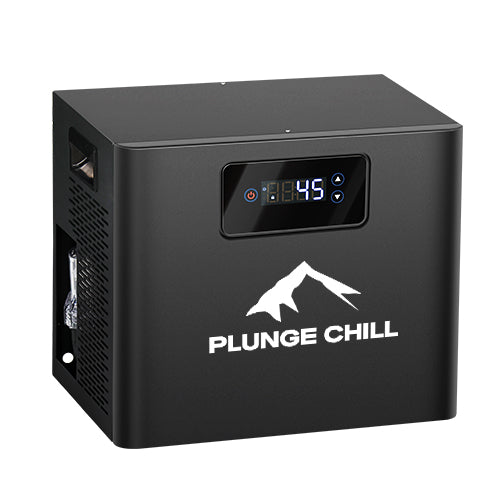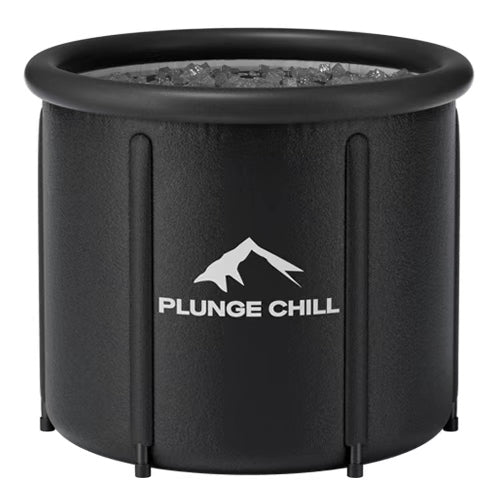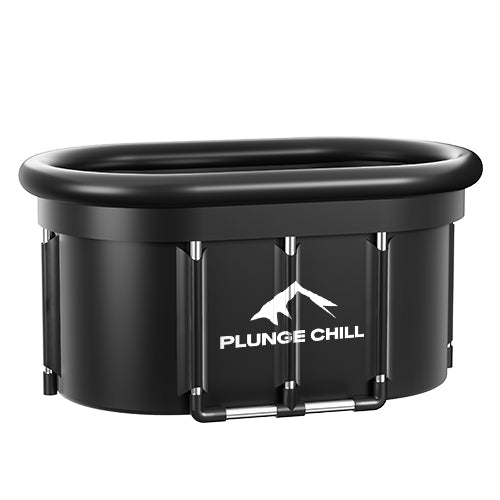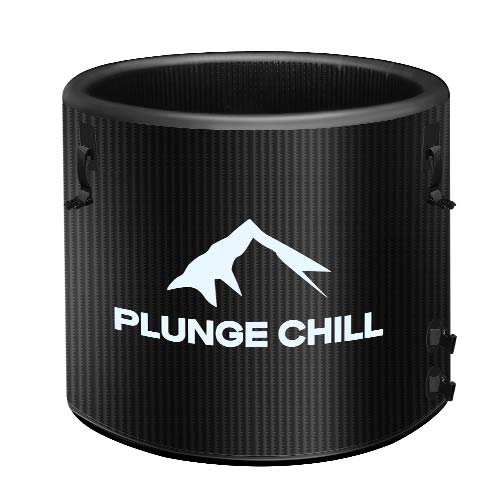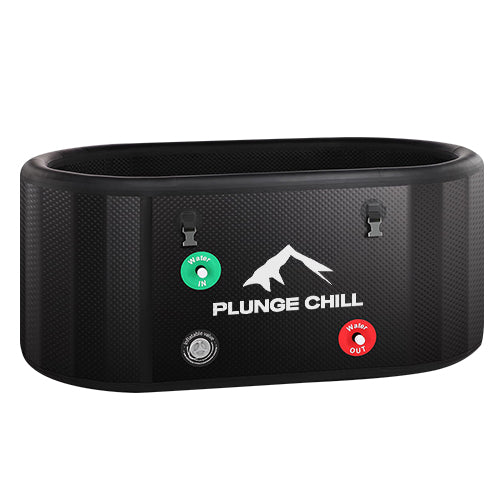What Cold Does to Blood Vessels and Blood Pressure
Cold triggers , the narrowing of blood vessels—most notably in the skin and extremities. Narrower vessels increase total peripheral resistance, which raises mean arterial pressure even when heart rate does not change much. In moderate environmental cold, research summarized by The Physiological Society reports that the rise in blood pressure is largely explained by increased peripheral resistance rather than big shifts in cardiac output, heart rate, or stroke volume. This pattern helps explain why many people measure higher blood pressure in winter without feeling palpably different in their chest.
The picture changes with specific forms of cold stimulation. When the face is cooled, cutaneous thermoreceptors in the trigeminal distribution stimulate neural pathways that increase sympathetic outflow to the vasculature. Studies highlighted by The Physiological Society show that face and head cooling can elevate muscle sympathetic nerve activity and blood pressure, which is one reason insulating the face can be disproportionately protective in windy, freezing conditions.
—a very different stimulus than cold air—provokes the within seconds. The American Heart Association has warned that sudden immersion in water below about 60°F can be life-threatening within a minute, especially due to involuntary gasp and hyperventilation while submerged. Water conducts heat away from the body much faster than air, so the physiologic stress rises rapidly. These differences matter for training, recovery protocols, and cold-weather recreation.

Definitions That Clarify the Science
Vasoconstriction is the reflex tightening of blood vessel smooth muscle that reduces vessel diameter and increases resistance. It is a primary driver of cold-related increases in blood pressure.
The cold pressor test is a standardized stimulus where a limb is immersed in very cold water to provoke a measurable pressor response. In a classic study of healthy volunteers, six minutes of foot immersion at 41℉ raised blood pressure, reduced forearm blood flow, and increased plasma noradrenaline by about 47 percent; beta-blockers blunted the heart rate rise but did not eliminate increased pressure or vasoconstriction (PubMed index).
Hypothermia is a drop in core body temperature below 95°F, with symptoms that can include shivering, confusion, and slowed reaction times. The American Heart Association notes that immersion accelerates heat loss relative to air exposure.
Heart rate variability (HRV) captures beat-to-beat fluctuations in the RR intervals. Time-domain measures like SDNN and RMSSD, and frequency-domain indices like HF and LF, reflect autonomic balance. In controlled cold exposure experiments, SDNN often emerges as a sensitive marker of cold-stress burden; several studies report parasympathetic predominance with colder ambient conditions within the parameters tested (TandF Online; PubMed index).
Cold-induced hypertension (CIH) refers to sustained hypertension driven by persistent cold exposure. Mechanistic work discussed in Science of the Total Environment implicates angiotensin II signaling and cold-related changes in the gut microbiome and short-chain fatty acids in animal models and translational frameworks.

Where the Resistance Rises: Skin Versus Muscle
A critical nuance is that whole-body or regional cooling without the face primarily constricts the cutaneous circulation. The Physiological Society emphasizes that brachial artery flow reductions can be misinterpreted; because skin and muscle beds are in series, measured reductions often reflect skin vasoconstriction rather than deep skeletal muscle constriction. In practical terms, keeping the skin warm—notably the face—blunts a large component of the cold-induced pressure rise. This is one of the rare cases where a scarf, balaclava, or insulated mask may shift physiology in a favorable direction.

Cold Water Versus Cold Air: Why They Feel So Different
Cold air tends to produce a slower, resistance-dominant increase in blood pressure with modest heart rate change in healthy, acclimated adults. Cold water immersion flips the script within seconds by inducing a pronounced cold shock response: rapid breathing, tachycardia, and hypertension. The American Heart Association reports that water pulls heat from the body roughly twenty-five times faster than air, making timing critical. Safety guidance for winter swims emphasizes gradual acclimatization, never swimming alone, and immediate rewarming—recommendations echoed by clinicians and coaches discussed by the American Heart Association’s news service.

What You Can Measure in the Short Term
Short-term, the most consistent signal is a blood pressure rise from peripheral vasoconstriction. In the cold pressor setting, catecholamines increase, peripheral flow drops, and pressure climbs. Beta-blockers can dampen heart rate responses, but do not abolish the pressor effect, a point demonstrated in early pharmacology experiments with propranolol and metoprolol (PubMed index).
Heart rate variability changes in cold are more nuanced because they depend on the stimulus and timing. In repeated, strictly controlled exposures to extreme cold air in healthy men, investigators have reported progressive parasympathetic predominance with colder temperatures; SDNN tracked closely with blood pressure, pulse, and peripheral hand temperature, suggesting it is a sensitive field marker for cold strain (TandF Online; PubMed index). At the same time, population studies that looked at rapid temperature swings rather than absolute cold hypothesize that variability itself can lower HRV by provoking autonomic imbalance, though quantitative effect estimates were not provided in the excerpt of Environmental Research. Taken together, brief cold can increase vagal markers in certain controlled contexts, but abrupt, real-world swings and cold shock tend to stress the system in ways that are not uniformly beneficial.

A Quick Map of Acute Responses by Cold Stimulus
| Cold stimulus and setting | Typical immediate cardiovascular pattern | Mechanistic note | Practical implication |
|---|---|---|---|
| Moderate whole-body cooling with face excluded (air) | Mean arterial pressure rises via increased total peripheral resistance; heart rate and stroke volume change little in young healthy adults | Skin sympathetic activity drives cutaneous vasoconstriction; muscle sympathetic activity may remain relatively unchanged | Insulate skin broadly to reduce the pressor response; prioritize comfort without overexertion (The Physiological Society) |
| Face or forehead cooling (air/ice) | Blood pressure and muscle sympathetic nerve activity increase; responses correlate with trigeminal input | Trigeminal-facial cold pathways augment sympathetic outflow | Insulate the face and head to blunt pressure spikes (The Physiological Society) |
| Cold pressor test, 41℉ immersion of a limb | Blood pressure increases; forearm blood flow decreases; noradrenaline rises by about 47%; heart rate rise is blunted by beta-blockade | Peripheral vasoconstriction dominates; beta1 blockade does not prevent the pressor effect | Expect a robust pressor response even on beta-blockers; avoid maximal effort in severe cold (PubMed index) |
| Sudden cold-water immersion under 60°F | Cold shock response: rapid breathing, heart rate, and blood pressure spikes; gasping risk when submerged | Water conducts heat away ~25× faster than air; hypothermia risk escalates | Acclimate gradually; never swim alone; rewarm immediately; high-risk individuals should avoid plunges (American Heart Association; National Center for Cold Water Safety) |
| Extreme cold air exposures from 23℉ to −4℉ (lab) | HRV indices change significantly; SDNN is especially sensitive; several datasets show increasing parasympathetic predominance with colder air | Integrated thermoregulatory and autonomic adjustments appear; patterns depend on protocol and timing | SDNN can help monitor cold strain in field work with caution about context (TandF Online; PubMed index) |

Longer-Term Cold: Seasonal Patterns, Occupation, and Physiology
Across populations, cold seasons and cold regions track with higher blood pressure and more cardiovascular events. The British Heart Foundation reports that in older adults in the UK, Ireland, and the Netherlands, heart attacks and strokes were more than twice as likely during cold spells lasting at least four days, and health impacts from a cold day or spell can persist for more than two weeks. They also emphasize that sudden drops from prior temperatures are particularly risky, not just absolute cold.
Indoor climate matters as well. In nationwide Japanese data summarized in Science of the Total Environment, every 50℉ drop in room temperature was associated with an 8.2 mmHg higher morning systolic blood pressure and a 6.2 mmHg higher evening systolic pressure. This is a practical, actionable finding for home heating choices and bedroom comfort during winter.
Occupational studies add another view. In refrigeration workers compared with non-exposed controls, both systolic and diastolic blood pressure were higher in the cold-exposed group, with the odds of hypertension rising with exposure severity and age. Interestingly, higher milk intake in that study correlated with lower odds of hypertension, a signal possibly linked to calcium intake; the authors recommended reducing cold exposure time and periodic blood pressure and electrocardiogram checks for older workers (PubMed index).
Climate epidemiology underscores the scale of cold-related risk. An analysis cited in a climate and cardiovascular review estimates roughly five million deaths annually are linked to non-optimal temperatures, with cold accounting for about 8.5 percent of those fatalities. Each degree Celsius drop below a reference temperature is associated with several percent higher cold-related mortality, and spikes in hospitalizations for myocardial infarction and acute coronary syndrome often follow sharply colder periods (ScienceDirect review). These are population-level signals, not individual destinies, but they justify vigilance.
Mechanistic work suggests that sustained cold exposure can remodel physiology. In animal models and translational studies highlighted in Science of the Total Environment, chronic cold altered the gut microbiome and short-chain fatty acids, suppressed tight junction proteins in the gut, and engaged angiotensin II pathways implicated in cold-induced hypertension. Brown adipose tissue activation and non-shivering thermogenesis are also part of the story in animals, but translating those details to everyday human practice requires caution.

Can Regular Cold Exposure Be “Good” for the Heart?
The honest answer is that it depends on the protocol, the person, and the outcome measured. On the potential-benefit side, a systematic review and meta-analysis of in healthy individuals reports increases in RR intervals, RMSSD, and HF power at rest—patterns often interpreted as enhanced parasympathetic modulation. Consumer-facing summaries also point to improved mood, recovery, and sleep in some contexts, and very cold air exposures in a chamber or brief cold-water immersions below 59℉ are commonly used by athletes for recovery. On the caution side, the American Heart Association has noted that evidence for broad cardiovascular benefits remains limited, especially in people with heart disease, and some winter-swim studies have observed higher troponin levels after prolonged cold exposures, suggesting possible myocardial strain in certain settings. A repeated-measures environmental study framework proposes that rapid temperature variability rather than absolute cold may reduce HRV by provoking autonomic imbalance, a reminder that real-world cold often arrives with abrupt swings.
A practical synthesis is to personalize protocols, monitor your own blood pressure and heart-rate-derived metrics, and avoid sudden, extreme exposures if you have cardiovascular disease or risk factors. The Physiological Society specifically recommends insulating the face and skin to blunt blood pressure rises in the cold, while Mayo Clinic and Harvard Health highlight keeping warm, pacing outdoor exertion, and monitoring for seasonal blood pressure increases.
What Actually Helps in Cold Weather
Dress to minimize skin cooling and especially protect the face, ears, and hands. The face is a key trigger zone for sympathetic activation; a scarf or insulated mask can blunt the reflex increases in pressure that face cooling can induce, as suggested by The Physiological Society. Maintain indoor temperatures, particularly overnight. The Japanese room temperature data show that a warmer bedroom has a measurable impact on morning blood pressure.
Hydrate and do not rely on alcohol or caffeine to “warm up.” Cold can thicken blood and increase coagulability, and cardiology groups emphasize hydration while advising against alcohol before or after exertion, which can mislead temperature perception and increase strain. Flu and respiratory infections add inflammatory load in winter; Harvard Health and the American Heart Association recommend keeping vaccinations current and favoring indoor exercise during the coldest days, especially for people with known heart disease.
Pace exertion in cold environments. Shoveling heavy, wet snow is a classic trigger for events because vasoconstriction meets sudden intense effort; both the British Heart Foundation and Harvard Health stress taking it slowly, warming up, and in some cases hiring help after major storms. People with angina or significant coronary disease should be wary of brisk exertion in cold air because reduced coronary flow under cold-air inhalation has been observed in small studies among those with blockages.
Monitor and plan. If your home blood pressure climbs with colder weather, share readings with your clinician. Mayo Clinic notes that seasonal medication adjustments are sometimes appropriate and should be made only under guidance. If you are considering deliberate cold exposure for recovery or wellness, acclimate gradually, control the breathing phase, and have a clear rewarming plan. Never swim alone in cold water.

Jewelry and Wearable Choices When It’s Cold
From a jewelry and wearables perspective, cold has two immediate effects: metals conduct heat away quickly and the microcirculation in fingers and wrists constricts. In practice, rings and bracelets may feel colder and tighter or, conversely, looser as finger volume shifts with temperature. This is not a direct cardiovascular hazard, but it affects comfort and safety. The following guidance is an informed inference based on materials science and field use rather than clinical trials, and I share it with moderate confidence.
Consider ring sizing for winter. Fingers can become slightly smaller in cold, making rings looser outdoors and potentially tighter when you come back inside and rewarm. If you frequently move between freezing outdoors and heated interiors, an adjustable ring or a silicone band for winter activities can reduce risk of loss outside and discomfort during rewarming.
Be strategic with metals and placement. Thick, highly conductive cuffs and rings placed over areas with minimal soft tissue will feel colder. If you must be outside for long periods, tucking bracelets under sleeves or gloves reduces heat loss to metal. Necklaces typically sit near well-perfused areas under clothing and are less of a comfort issue.
Keep medical alert jewelry visible but protected. For people with known cardiac conditions, medical alert bracelets and necklaces remain important during winter. Wearing them over a base layer or at the edge of a cuff keeps them visible while reducing direct skin chill. This is an inference grounded in experience with winter layering; confidence is moderate.
Choose cold-tolerant bands for wearables. Optical heart-rate and HRV sensors rely on good skin contact and adequate perfusion. In cold weather, peripheral vasoconstriction can degrade signal quality; moving a watch slightly higher up the forearm under a glove or selecting a snug, comfortable strap material that maintains contact can improve readings. This is a practical inference based on sensor physics and field testing; confidence is moderate.
Care for jewelry after exposure. Moisture plus cold can irritate skin under snug bands or rings. Dry the skin and the piece after snow or rain, remove trapped moisture, and avoid immediate hot water shock on very cold skin to reduce irritation. These are skin-care inferences with high face validity; confidence is moderate.

Buying Tips for Winter-Friendly Jewelry and Wearables
If you are shopping with winter in mind, consider adjustable clasps, slight sizing allowances for rings you wear outdoors, and strap materials that maintain comfort when cool. Silicone rings, fabric or leather watch straps, and designs that sit comfortably under a sleeve or glove tend to be more forgiving in the cold. Reflective accents on bracelets or necklaces can add visibility during short winter days without affecting comfort. These are lifestyle recommendations rather than medical claims; confidence is moderate.
For those who track exertion and recovery, devices that report HRV can be informative in winter, but interpret with context. Controlled studies show that SDNN is sensitive to cold exposures in healthy men, yet abrupt temperature swings and cold shock may reduce HRV in real-world settings. If readings look unusual, warm up, ensure good sensor contact, and recheck before making training decisions. This synthesis combines study results with practical inference; confidence is moderate.
Special Situations: Work, Exercise, and Polar Plunges
Outdoor workers and rescuers face sustained cold and often wind, which increases convective heat loss. The heart works harder in these settings even at modest workloads. Monitoring simple markers like heart rate, blood pressure when feasible, and peripheral skin temperature, with attention to SDNN if an HRV device is available, can help guide breaks and layering decisions; this approach is based on research showing SDNN tracks cold strain (TandF Online; PubMed index).
Athletic training in the cold can be rewarding but requires pacing. Warm up longer, protect the face and airways, and avoid maximal efforts on the first truly cold days. People with known coronary disease or angina should be especially cautious; even walking briskly into a stiff, freezing wind can provoke symptoms due to combined vasoconstriction and increased workload, as noted by Harvard Health and the American Heart Association.
Polar plunges and ice baths deserve special caution. The American Heart Association’s news reporting emphasizes that evidence for broad cardiovascular benefit is limited and that cold shock carries real risks, including drowning from involuntary gasp and cardiac strain. If you pursue cold-water immersion, acclimate gradually over weeks, enter under supervision, and have a robust rewarming plan ready the moment you exit. People with heart disease, arrhythmias, heart failure, recent myocardial infarction, uncontrolled hypertension, or who are pregnant should avoid cold-water immersion unless specifically cleared by a clinician; if cleared, keep sessions brief, avoid hyperventilation or breath-holding, and never plunge alone.

Disclaimer
By reading this article, you acknowledge that you are responsible for your own health and safety.
The views and opinions expressed herein are based on the author's professional expertise (DPT, CSCS) and cited sources, but are not a guarantee of outcome. If you have a pre-existing health condition, are pregnant, or have any concerns about using cold water therapy, consult with your physician before starting any new regimen.
Reliance on any information provided in this article is solely at your own risk.
Always seek the advice of a qualified healthcare provider with any questions you may have regarding a medical condition, lifestyle changes, or the use of cold water immersion. Never disregard professional medical advice or delay in seeking it because of something you have read in this article.
The information provided in this blog post, "Cardiovascular Responses to Cold Stimuli: Short-Term and Long-Term Effects" is for informational and educational purposes only. It is not intended to be a substitute for professional medical advice, diagnosis, or treatment.
